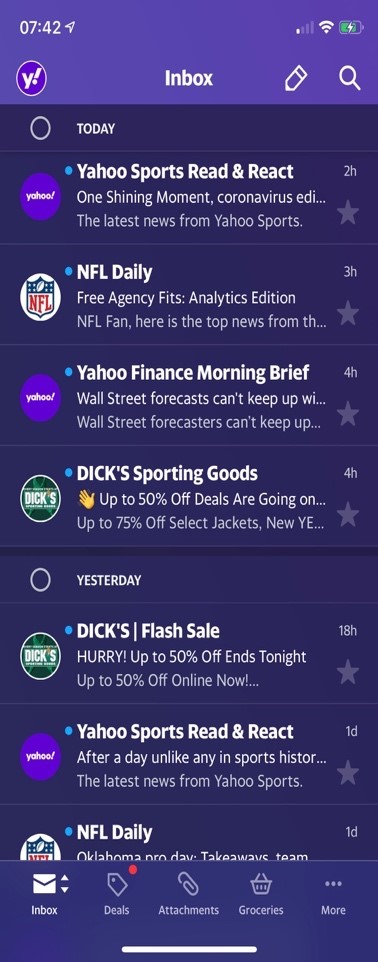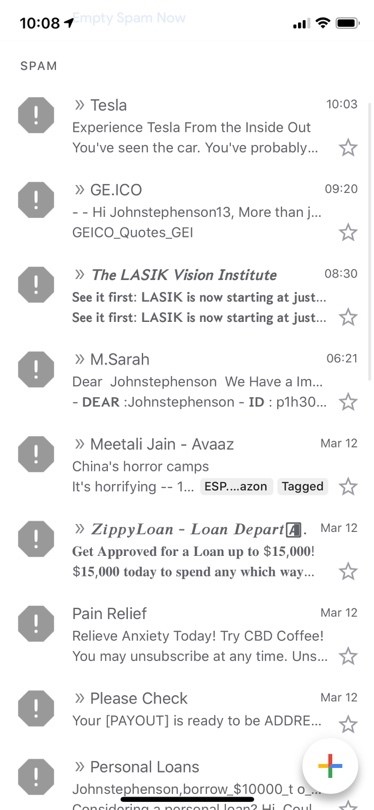There’s a newish industry protocol that’s going to be receiving a lot of attention this year. Whether you send mail, read mail or manage inboxes for others, the Brand Indicators for Message Identification (BIMI) protocol is something that should appeal to you.
Benefits for bulk email senders
When talking to many large brands who send bulk email, we continued to hear frustration and confusion about how to reliably influence which logo should accompany their email sends. This has been a pain point for many brands and marketers who have been unclear about how to get their logo to be displayed in various mailbox providers, or how to change out a retired logo after a merger, acquisition, or rebranding (you know, the details that keep marketers up at night).Brand Indicators for Message Identification hopes to be the standard across various mailbox providers.
Currently, Verizon Media (Yahoo! and AOL) is leveraging Brand Indicators for Message Identification (BIMI). Senders currently using the protocol will see their logos in Yahoo’s Mobile Mail app. Google has also publicly announced plans to roll forward with BIMI at some point this year.
Note: Both Verizon Media and Google have legacy systems, which will still display logos for senders who adhere to those rules, but just because you see your logo in these respective mail apps, does NOT mean that you are BIMI compliant. If and when the legacy programs are sunsetted, that logo will be a no go!
Previously, each email provider established their own methodology for identifying brand logos to display within email, but BIMI creates consistency and an industry standard. Most notably, Gmail was leveraging Google Plus Business profiles to associate a logo with a sender’s domain. With Google’s announcement to trial Brand Indicators for Message Identification in 2020, the assumption is that it will become their new BIMI standard.
Empowering a brand owner to have full control of their logo helps provide a more immersive and consistent brand experience. Many email recipients tend to scan their inboxes quickly for their favorite brands, but because of the uniformity of text size and color in the inbox, nothing stands out. The stopping power of a recognizable logo makes finding their favorite brand easy. This beacon triggers user recognition and offers a significant advantage, particularly for companies with high brand affinity.
Benefits for mailbox providers
This breakthrough is also very exciting news for mailbox providers, who see amazing potential and are motivated to promote this functionality. For this group, the immediate benefits are two-fold:
- To provide an improved, intuitive visual experience for their user base
- To encourage broad adoption of the anti-spoofing protocol, DMARC
That last bullet point is going to be a big one for all large volume senders who are not currently using DMARC.
Domain-based Message Authentication, Reporting and Conformance implementation is not a simple thing, and it’s even more complex for larger companies. When it is used for BIMI, it requires the brand to set a mail policy, which tells mailbox providers to either block or quarantine emails from their domain, and all sub domains, when the email does not pass SPF or DKIM authentication checks. So, for a global company sending from @example.com, they may have mail servers around the world, and possibly even third parties which have been authorized to send from their corporate domain (or a subdomain). To enable BIMI, they need to make sure that each of those mail streams pass email authentication or those messages will not be seen. The DMARC protocol does feedback reporting on the sending email server and whether mail is passing or failing email authentication, but this data is delivered from each participating email service.
Making sense of all these reports can be a major headache. So much so, that most major brands will use a DMARC provider to manage this reporting. To enable DMARC, you will likely need to coordinate with your corporation’s Security Team. Again, this is an anti-spoofing protocol and it must be enforced at the organizational domain.
Why this is big and where it could lead
For most US-based B2C senders, Gmail, Yahoo and AOL email addresses will usually account for more than 50% of their recipients. That definitely qualifies as a critical mass, which will continue to push other mailbox providers, and most major email senders, into participation. As we continue to see wider adoption, those who are not using BIMI may find themselves in a diminishing percentage of bulk mail.
I would speculate that once there is wide enough adoption, mailbox providers like Google or Verizon Media (after finding that the ‘carrot’ approach works for the majority of bulk senders) may consider using the ‘stick’ to capture the remainder who have not adopted. The stick may be a shameful ‘?’ that displays instead of a brand’s logo, or the ‘!’, which can be found in the Gmail Spam folder. These indicate that, “We aren’t really sure who sent this because they have not secured mail from their domain.”
The work of separating good mail from bad mail is an increasingly complex challenge that is shared among mailbox providers. Other than major financial mailers and a few other key brands, many have been quite vocal about the adoption of DMARC not meeting their expectations. It was designed to help the mail sender have a voice about how their mail should be treated in the event of a potential spoof. This benefits mailbox providers by taking the guesswork out of trying to distinguish between a spoof and a legitimate message that may have experienced a technical error.
BIMI logos in Yahoo app

‘!’ logo in Gmail app

What’s a sender to do?
If you want to see your beautiful BIMI logo in Verizon Media’s app (and coming soon, Google’s app) some best practices to follow include:
- Talk with your ESP about DMARC and BIMI. While your ESP won’t be in a position to implement the vast majority of required steps for you, they can confirm if you have all the appropriate pre-requisites in place for your bulk mail and they should be able to help provide additional context around the pros and cons specific to your business and your bulk program.
- Talk with key stakeholders within your company. Security and your IT group would need to be involved if you intend to roll out DMARC and BIMI. Depending upon scale and complexity, it can take several months to roll out, so these conversations should be taking place ASAP if you would like to have BIMI in place before Google starts to roll this out.
- Talk with vendors. For it to work as intended, you will want to have a system in place where reporting is being organized and monitored on a continuous basis. This is almost always fulfilled through a third party vendor.
